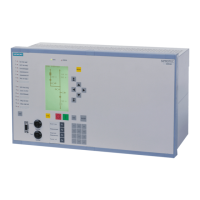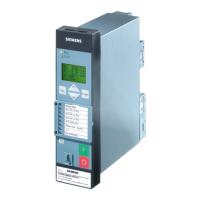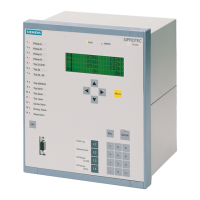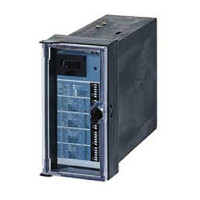Setting Notes
General
The synchronization function is available in devices 7SJ64 and 7SJ62. 7SJ64 has four SYNC-function groups,
7SJ62 has one.
When setting the Power System Data 1 (see Section 2.1.3.2 Setting Notes) the device was already provided
with data relevant for the measured values and the operating principle of the synchronization function. This
concerns the following parameters:
202 Vnom PRIMARY primary nominal voltage of the voltage transformers V
1
(phase-to-phase) in kV;
203 Vnom SECONDARY secondary nominal voltage of the voltage transformers V
1
(phase-to-phase) in V;
213 VT Connect. 3ph defines the way voltage transformers are connected if there are several voltage
transformers at the primary side..
When using the synchronization function, the setting Van,Vbn,Vcn,VSy must always be selected regardless
of whether there are phase-ground or phase-phase voltages at the primary side. Two phase-to-phase voltages
are connected to the device in open delta voltage connection (see also the connection examples in Appendix
C Connection Examples). In this case, however, a zero sequence voltage cannot be determined. The functions
“Directional Time Overcurrent Protection Ground”, “Directional Ground Fault Detection” and “Fuse Failure
Monitor (FFM)” must be either removed or switched off.
240 VT Connect. 1ph specifies the voltage connected at side V
1
if only one voltage transformer is available
at the primary side. If this address is not set to NO, the setting of address 213 is
not relevant anymore. With
single-phase connection the device generally assumes the voltage at the fourth voltage transformer (V
4
) as
the voltage V
2
to be synchronized.
214 Rated Frequency the operating range of the synchronizing function refers to the nominal frequency of
the power system (f
NOM
± 3 Hz);
The synchronization function can only operate if at least one of the addresses 161 25 Function 1 TO 164
25 Function 4 is set to Enabled during configuration of the functional scope (see Section 2.1.1.2 Setting
Notes). The operating mode can be preselected: ASYN/SYNCHRON means that switching will take place under
synchronous and asynchronous conditions. SYNCHROCHECK corresponds to the classic synchrocheck function.
If this function is not required, then Disabled is set. A synchronization function group thus rendered ineffec-
tive is disabled in the Synchronization menu item, all other groups are displayed.
Only the corresponding messages of SYNC Function Group 1 are pre-allocated for IEC 60870–5–103 (VDEW).
If other function groups (2 to 4) are configured and if their messages are to be disposed of via VDEW, they
must first be configured to the system interface.
Selecting one of the displayed SYNC function groups in DIGSI opens a dialog box with different tabs in which
the individual settings for synchronism can be made. For SYNC function group x the following applies:
General Settings
The general thresholds for the synchronizing function are set at addresses 6x01 TO 6x12.
Address 6x01 Synchronizing x can be set to switch the entire SYNC function group x ON or OFF. If switched
off, the synchronous check does not verify the synchronization conditions and release is not granted.
Address 6x02 SyncCB is used to select the switchgear component to which the synchronizing settings will be
applied. Select the option none to use the function as external synchronizing feature. It will then be triggered
via binary input messages.
Addresses 6x03 Vmin and 6x04 Vmax set the upper and lower limits for the operating voltage range for V1 or
V2 and thus determine the operating range for the synchronizing function. If the values leave this band, a
message will be output.
Address 6x05 V< indicates the voltage threshold below which the feeder or the busbar can safely be consid-
ered switched off (for checking a de-energized feeder or busbar).
Address 6x06 V> indicates the voltage threshold above which the feeder or busbar can safely be considered
energized (for checking an energized feeder or busbar). It must be set below the anticipated operational
undervoltage.
2.21.1.8
Functions
2.21 Synchronization Function
298 SIPROTEC 4, 7SJ62/64, Manual
C53000-G1140-C207-8, Edition 08.2016

